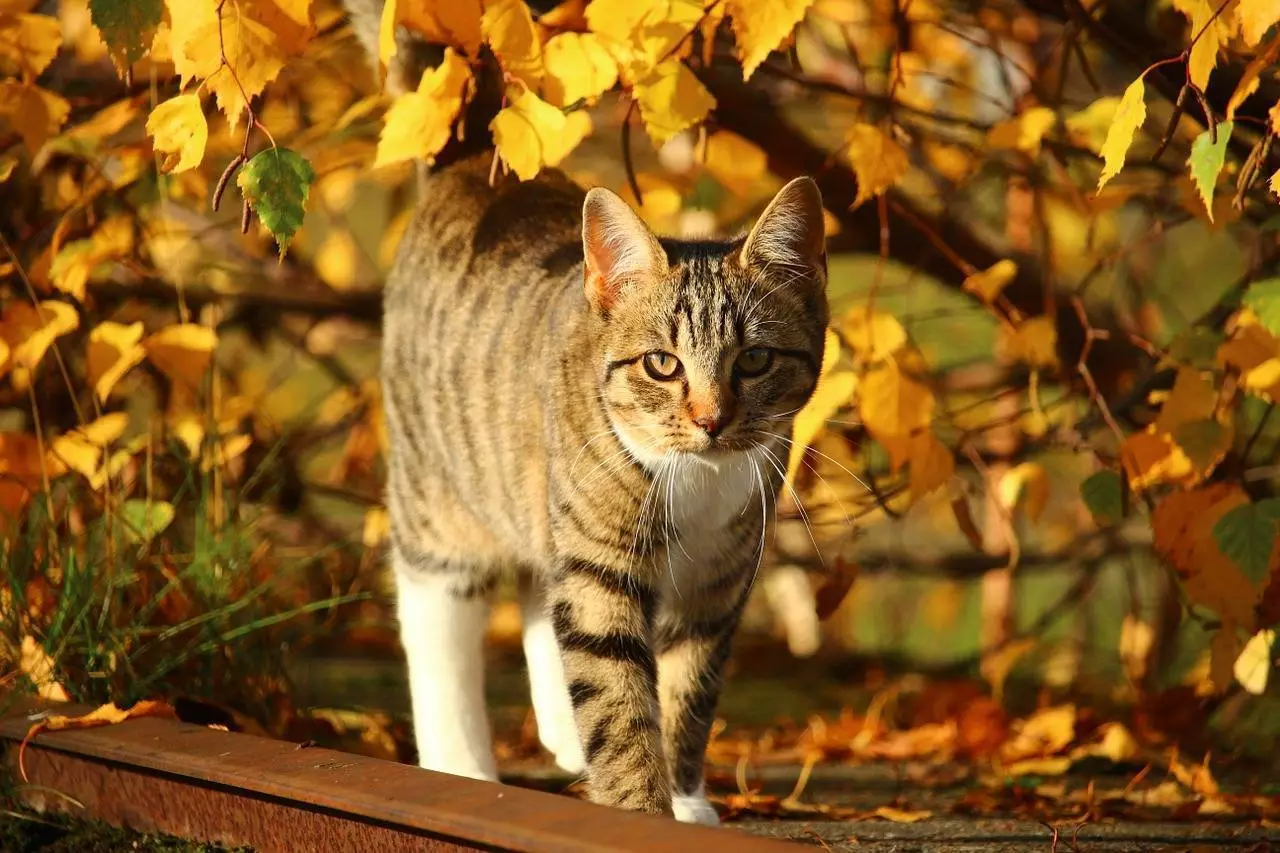As the sweltering summer days fade and the cooler autumn air sets in, pet owners often revel in the changing scenery. Vibrant foliage paints the landscape with hues of orange, red, and yellow, creating a picturesque environment for outdoor activities with furry companions. However, this beauty comes with hidden dangers, as certain seasonal plants and natural elements can be harmful, or even fatal, to pets. It is vital for pet owners to be informed about these risks to ensure a safe and enjoyable autumn experience.
The Allure of Autumn: A Double-Edged Sword
Autumn signifies a time of adventure, with pets eager to explore their surroundings. However, this innate curiosity can lead pets into perilous situations. Nina Downing, a nurse from the People’s Dispensary for Sick Animals (PDSA), emphasizes the importance of pet owners being vigilant. During this season, pets may encounter unfamiliar smells and objects that entice their exploration instincts, potentially leading to dangerous ingestions.
With the enticing environment that autumn provides, understanding which plants are toxic can prevent unnecessary trips to the veterinarian. This knowledge not only protects pets but also gives owners peace of mind while indulging in outdoor activities.
One of the most concerning threats in autumn is the abundance of toxic plants that can be found in many environments. Here are some hazardous plants that pet owners should be wary of:
1. **Acorns**: Native to oak trees, acorns can prove toxic due to their high tannic acid content. Symptoms of acorn ingestion may include severe gastrointestinal upset, which could escalate to severe complications such as kidney and liver damage. Moreover, unripe, green acorns are especially dangerous. They can not only induce vomiting and diarrhea but also pose a choking risk due to their size.
2. **Yew Trees**: This common landscape plant harbors a hidden danger—every part of the yew tree, including the attractive red berries, is poisonous to pets. Even a small amount can evoke serious reactions, prompting immediate veterinary care if ingested.
3. **Horse Chestnut Trees**: The entirety of the horse chestnut tree, from its bark to its conkers, poses risks due to a toxic compound called aesculin. Ingestion can lead to various health issues, and the conkers themselves can be choking hazards.
4. **Autumn Crocus**: Easily mistaken for its spring counterpart, this beautiful plant features pale mauve or white flowers, but all parts contain potent toxins. Symptoms of ingestion can be catastrophic, including severe gastrointestinal distress and potential organ failure, necessitating swift veterinary assistance.
As pet owners navigate the beauty of fall, maintaining vigilance is crucial. During walks, it’s important to steer clear of areas where poisonous plants may thrive. Regular monitoring and keeping an eye on pets can help prevent accidental ingestion of harmful substances. Additionally, consider the following precautions to keep pets safe:
– **Training**: Educate your pet not to forage for food while you’re outdoors. Implementing commands and positive reinforcement can discourage scavenging behavior.
– **Muzzles**: For pets that tend to explore extensively, a well-fitted basket muzzle can be an effective protective measure while outdoors. This ensures that pets cannot ingest harmful plants or objects.
Recognizing Symptoms: Your Role as a Pet Owner
If a pet exhibits symptoms like vomiting, diarrhea, lethargy, or unusual behavior, it could indicate that they’ve ingested something toxic. Owners should not wait for visible signs before seeking help; if there is suspicion of ingestion, contacting a veterinarian immediately is paramount. The clock is ticking, and early intervention can significantly impact a pet’s prognosis.
As the autumn season unfolds, its beauty should not overshadow the imperative need for awareness regarding potential dangers that lurk in nature. By understanding which plants are harmful and taking proactive measures, pet owners can ensure their furry friends have a safe and enjoyable season. For further guidance and resources on autumn pet safety, consult veterinary professionals and refer to organizations specializing in animal care.
The responsibility of pet ownership extends beyond affection; it includes vigilance—especially in seasons that bring about new risks. By being informed and prepared, pet owners can harness the joys of autumn while ensuring their pets remain out of danger.
